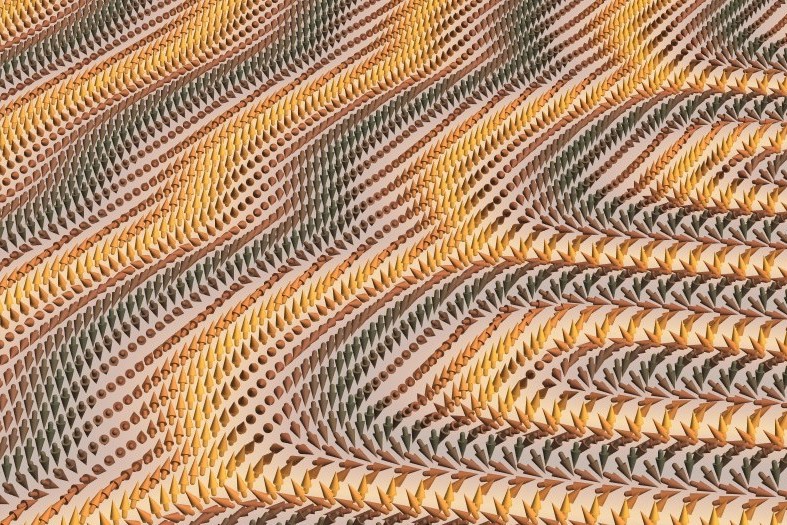Research: Topological domain walls in helimagnets
In helimagnets the magnetization is twisted into a helix due to the Dzyaloshinskii-Moriya interaction. The orientation of the helix is determined by magnetocrystalline anisotropies but in cubic materials different orientations are degenerate and can be realised simultaneously giving rise to helimagnetic domains.
Researchers from our institute in collaboration with an international team were able to elucidate the character of such domain walls in the helimagnetic material FeGe. They are distinct from Bloch and Néel walls known from ferromagnets but are rather similar to grain boundaries, in particular, to those found in cholesteric liquid crystals. Similar to crystals, the periodic arrangement of the magnetization in a helimagnet can be disturbed by disclination and dislocation defects, that can be interpreted as topological vortices in the helix orientation. Such defects are also the building blocks of certain helimagnetic domain walls.
Importantly, the whirling spin texture close to these domain walls can also carry a topological skyrmion number, which is known to give rise to an emergent electrodynamics for electrons and magnons. This implies that these domain walls can be efficiently manipulated by spin currents which identifies an interesting direction of future research in the field of spintronics.

